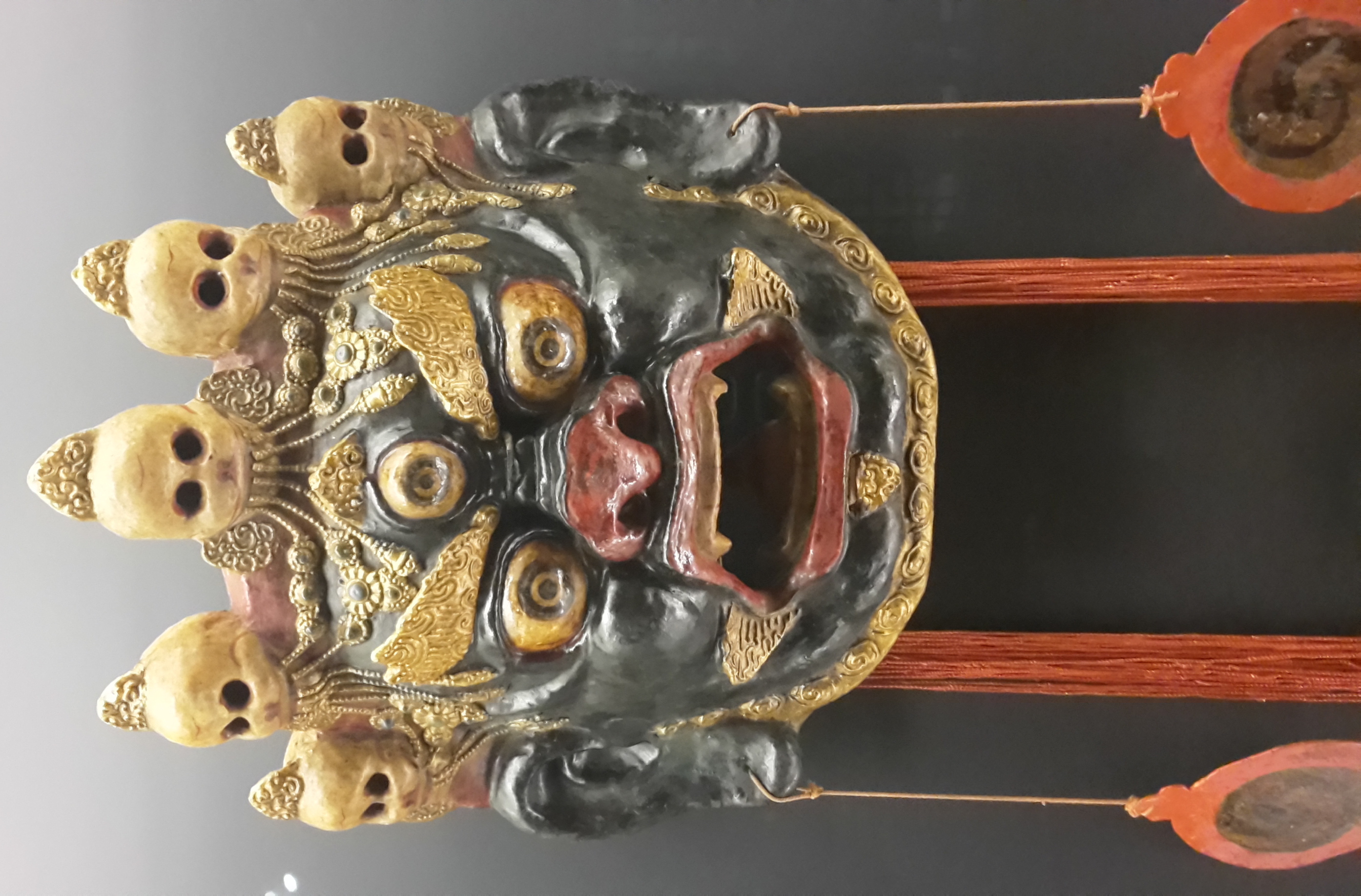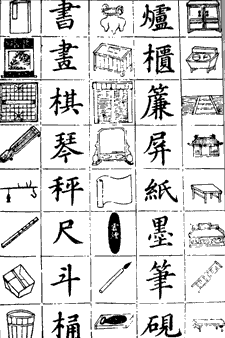|
Eight Great Yakṣa Generals
The Eight Great Yakṣa Generals (Chinese: 八大夜叉大将 Bādà Yèchā Dàjiàng), or simply the Eight Yakṣa Generals are guardian deities in Buddhism. They are retainers of Vaiśravaṇa, guardian of the north and king of the yakṣas. In East Asia, they are also variously known as the Eight Great Yakṣas (八大藥叉), the Eight Great Heavenly Kings (八大天王), and the Eight Brothers of Vaiśravaṇa (毘沙門八兄弟). Relationship to Vaiśravaṇa The term ''yakṣarākṣasa'' has been used as a general term to denote the many classes of spirits in Indian mythology, combining the words yakṣa and rākṣasa. According to Buddhist mythology, Vaiśravaṇa is the chief of these beings, and long ago dwelt together with them in the realm of darkness. When Vaiśravaṇa converted to Buddhism, the many demonic spirits under his jurisdiction likewise assumed the role of devotees to the Buddha. Originally malevolent beings, their conversion led to their deification ... [...More Info...] [...Related Items...] OR: [Wikipedia] [Google] [Baidu] |
Pinyin
Hanyu Pinyin (), often shortened to just pinyin, is the official romanization system for Standard Mandarin Chinese in China, and to some extent, in Singapore and Malaysia. It is often used to teach Mandarin, normally written in Chinese form, to learners already familiar with the Latin alphabet. The system includes four diacritics denoting tones, but pinyin without tone marks is used to spell Chinese names and words in languages written in the Latin script, and is also used in certain computer input methods to enter Chinese characters. The word ' () literally means " Han language" (i.e. Chinese language), while ' () means "spelled sounds". The pinyin system was developed in the 1950s by a group of Chinese linguists including Zhou Youguang and was based on earlier forms of romanizations of Chinese. It was published by the Chinese Government in 1958 and revised several times. The International Organization for Standardization (ISO) adopted pinyin as an international st ... [...More Info...] [...Related Items...] OR: [Wikipedia] [Google] [Baidu] |
Dharmapalas
A ''dharmapāla'' (, , ja, 達磨波羅, 護法善神, 護法神, 諸天善神, 諸天鬼神, 諸天善神諸大眷屬) is a type of wrathful god in Buddhism. The name means "''dharma'' protector" in Sanskrit, and the ''dharmapālas'' are also known as the Defenders of the Justice (Dharma), or the Guardians of the Law. There are two kinds of ''dharmapala'', Worldly Guardians (''lokapala'') and Wisdom Protectors (''jnanapala''). Only Wisdom Protectors are enlightened beings. Description A protector of Buddhist dharma is called a ''dharmapala''. They are typically wrathful deities, depicted with terrifying iconography in the Mahayana and tantric traditions of Buddhism. The wrathfulness is intended to depict their willingness to defend and guard Buddhist followers from dangers and enemies. The ''Aṣṭagatyaḥ'' (the eight kinds of nonhuman beings) is one category of ''dharmapālas'', which includes the Garuda, Deva, Naga, Yaksha, Gandharva, Asura, Kinnara and Mahoraga. In ... [...More Info...] [...Related Items...] OR: [Wikipedia] [Google] [Baidu] |
Yakshas
The yakshas ( sa, यक्ष ; pi, yakkha, i=yes) are a broad class of nature-spirits, usually benevolent, but sometimes mischievous or capricious, connected with water, fertility, trees, the forest, treasure and wilderness. They appear in Hindu, Jain and Buddhist texts, as well as ancient and medieval era temples of South Asia and Southeast Asia as guardian deities. The feminine form of the word is or ''yakshini'' ( sa, यक्षिणी ; Pali:Yakkhini). In Hindu, Jain and Buddhist texts, the has a dual personality. On the one hand, a may be an inoffensive nature-fairy, associated with woods and mountains; but there is also a darker version of the , which is a kind of ghost ( bhuta) that haunts the wilderness and waylays and devours travellers, similar to the . Early yakshas Several monumental yakshas are known from the time of the Maurya Empire period. They are variously dated from around the 3rd century BCE to the 1st century BCE. These statues are monumental ( ... [...More Info...] [...Related Items...] OR: [Wikipedia] [Google] [Baidu] |
Twelve Heavenly Generals
In East Asian Buddhism, the Twelve Heavenly Generals or Twelve Divine Generals are the protective deities, or ''yaksha'', of Bhaisajyaguru, the buddha of healing. They are introduced in the ''Bhaiṣajyaguruvaidūryaprabharāja Sūtra''. They are collectively named as follows: * * Japanese: or or Names of generals The precise names of the generals seem to vary depending on tradition. Those listed below are from an available Sanskrit transcription of the ''Bhaiṣajyaguruvaiḍūryaprabhārāja Sūtra'': While the ''Honji'' and zodiac correspondences listed above are the standard in Japanese sources, there is variation among texts and regional traditions. Popular culture * Statues of the Twelve Heavenly Generals stand in Ngong Ping, Hong Kong. * The Heavenly Generals and their names were used as character material for the powerful digital monster characters who serve the "Four Holy Beasts" (Digimon Sovereigns in the English Dub) in the Digital World, from the 2001 series ... [...More Info...] [...Related Items...] OR: [Wikipedia] [Google] [Baidu] |
Pañcika
Pañcika () is a yaksha and consort of Hārītī, with whom he is said to have fathered 500 children. According to the '' Mahavamsa'', Pañcika was the commander-in-chief of the yakṣa army of Vaiśravaṇa and had another 27 yakṣa generals under his orders. Pañcika was often represented holding a lance and a bag of jewels or money together with Hariti in the Greco-Buddhist art of Gandhara Gandhāra is the name of an ancient region located in the northwestern region of the Indian subcontinent, more precisely in present-day north-west Pakistan and parts of south-east Afghanistan. The region centered around the Peshawar Vall ..., where they illustrated marital love following the intervention of the Buddha. The two figures "were very popular in Gandhara in the latter part of the second century, and their statues are many." When depicted holding a spear, he also signals his role as the chief of the Yakṣas. The iconography of Pancika was eventually merged with th ... [...More Info...] [...Related Items...] OR: [Wikipedia] [Google] [Baidu] |
Manibhadra
Manibhadra is one of the major yakshas. He was a popular deity in ancient India. Iconography Several well known images of yaksha Manibhadra have been found. The two oldest known image are: Yaksha Manibhadra from Parkham Yaksha Manibhadra coming from Parkham near Mathura, datable to period 200 BCE – 50 BC The statue is 2.59 meters high. On stylistic grounds and paleographical analysis of the inscription, the statue is datable to the middle of the 2nd century BCE. The inscription says "Made by Gomitaka, a pupil of Kunika. Set up by eight brothers, members of the Manibhadra congregation ("puga")." This inscription thus indicates that the statue represents the Yaksa Manibhadra. According to John Boardman, the hem of the dress is derived from Greek art. Describing a similar statue, John Boardman writes: "It has no local antecedents and looks most like a Greek Late Archaic mannerism". Similar folds can be seen in the Bharhut Yavana. File:Parkham Yaksha inscription.jpg, Parkham Ya ... [...More Info...] [...Related Items...] OR: [Wikipedia] [Google] [Baidu] |
Rōmaji
The romanization of Japanese is the use of Latin script to write the Japanese language. This method of writing is sometimes referred to in Japanese as . Japanese is normally written in a combination of logographic characters borrowed from Chinese (kanji) and syllabic scripts (kana) that also ultimately derive from Chinese characters. There are several different romanization systems. The three main ones are Hepburn romanization, Kunrei-shiki romanization (ISO 3602) and Nihon-shiki romanization (ISO 3602 Strict). Variants of the Hepburn system are the most widely used. Romanized Japanese may be used in any context where Japanese text is targeted at non-Japanese speakers who cannot read kanji or kana, such as for names on street signs and passports and in dictionaries and textbooks for foreign learners of the language. It is also used to transliterate Japanese terms in text written in English (or other languages that use the Latin script) on topics related to Japan, such as ... [...More Info...] [...Related Items...] OR: [Wikipedia] [Google] [Baidu] |
Chinese Characters
Chinese characters () are logograms developed for the writing of Chinese. In addition, they have been adapted to write other East Asian languages, and remain a key component of the Japanese writing system where they are known as '' kanji''. Chinese characters in South Korea, which are known as '' hanja'', retain significant use in Korean academia to study its documents, history, literature and records. Vietnam once used the ''chữ Hán'' and developed chữ Nôm to write Vietnamese before turning to a romanized alphabet. Chinese characters are the oldest continuously used system of writing in the world. By virtue of their widespread current use throughout East Asia and Southeast Asia, as well as their profound historic use throughout the Sinosphere, Chinese characters are among the most widely adopted writing systems in the world by number of users. The total number of Chinese characters ever to appear in a dictionary is in the tens of thousands, though most are g ... [...More Info...] [...Related Items...] OR: [Wikipedia] [Google] [Baidu] |


.jpg)




